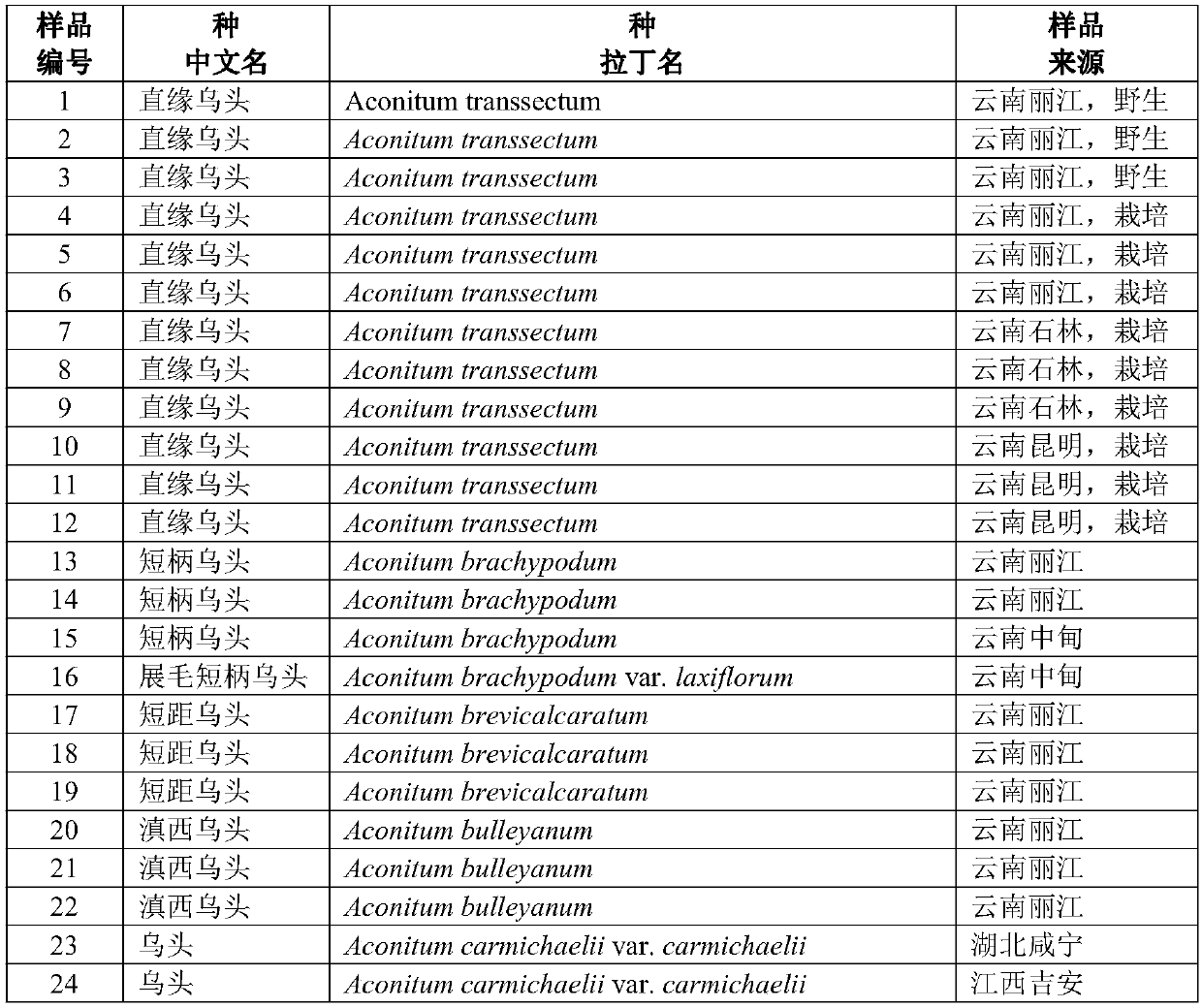Big data based identification method for aconitum transsectum DNA barcode and aconitum transsectum
A barcode and big data technology, applied in the field of molecular identification, can solve problems such as indistinguishability and difference in identification ability, and achieve the effects of high accuracy, short time-consuming and high repeatability
- Summary
- Abstract
- Description
- Claims
- Application Information
AI Technical Summary
Problems solved by technology
Method used
Image
Examples
Embodiment 1
[0040] 1. Collection and preservation of medicinal plant specimens of the genus Aconitum
[0041] Consult the literature and the collection information of major domestic herbariums, and formulate a field sampling strategy according to the sampling requirements of DNA barcodes. Each species collects as many individuals as possible in different places in its distribution area. The leaves of all individuals are dried and preserved with silica gel. for subsequent total DNA extraction. In the present invention, more than 40 kinds (including variants) of 130 leaf materials have been obtained. Among them, the samples of Aconitum aconitum came from 1 wild distribution area and 3 cultivation areas, a total of 12 samples. The list of materials and sample sources are listed in Table 1.
[0042] Table 1 Specimens and sources of medicinal plants of the genus Aconitum
[0043]
[0044]
[0045]
[0046]
[0047] 2. Total DNA extraction
[0048] The total DNA of the above-men...
Embodiment 2
[0075] Using the leaves of Aconitum aconitum and other plants of the genus Aconitum without flowers and fruits collected in medicinal planting areas and in the field as materials, the method in Example 1 was used for DNA extraction, PCR amplification and sequencing. The identification results showed that from the The psbK-psbI-sequence obtained from the known Aconitum plants is the base "ACTAAGA" at the 118-124bp position, and the base "CCTATCTATA" at the 213-222bp position, but the above-mentioned specificity is not found in other unknown plants of the genus Aconitum sex site.
PUM
 Login to View More
Login to View More Abstract
Description
Claims
Application Information
 Login to View More
Login to View More - Generate Ideas
- Intellectual Property
- Life Sciences
- Materials
- Tech Scout
- Unparalleled Data Quality
- Higher Quality Content
- 60% Fewer Hallucinations
Browse by: Latest US Patents, China's latest patents, Technical Efficacy Thesaurus, Application Domain, Technology Topic, Popular Technical Reports.
© 2025 PatSnap. All rights reserved.Legal|Privacy policy|Modern Slavery Act Transparency Statement|Sitemap|About US| Contact US: help@patsnap.com



